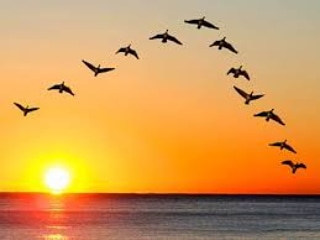By Rabbi Yair Hoffman for the Five Towns Jewish Times
Pesach is over. Family member go home. But – we can continue the joy.
The Gemorah (Sukkah 45b) tells us in the name of Rabbi Yochanan in the name Rabbi Yochanan HaMekusi:
“Whomever does a binding to the Chag with eating and drinking, the Pasuk considers it as if he had built a Mizbeach and offered korbanos upon it.” The Gemorah is actually making a drasha on the verse in Tehillim (118:27), where it states, “Tie the festival offering to the corners of the Mizbeach with strings.”
There are two explanations of the term “binding to the Chag” found in Rashi. The first explanation refers to the holiday itself. The second explanation refers to the day after the holiday. This second explanation in the Rashi is referenced in the Ramah (OC 429:2).
According to Rashi’s second explanation, Chazal darshen that this means to continue the joy of the Yom Tov onward to the next day. In this statement it is clear that the sages wish us to continue the Yom Tov, and to do so in a festive spirit, including food and drink. Some even have the custom to limit activities (See Torah Lishma Siman 140).
THE ARIZAL
The Arizal explains that there are still sparks of kedusha from the Yom Tov that are left over. These sparks should be channeled properly. Therefore, on Isru Chag, there is additional celebration in food and drink. We also do not fast or eulogize on Isru Chag (See Mogain Avrohom 425:8).
The Bais Yoseph (OC 494) writes that the Yerushalmi in Avodah Zarah 1:1 calls Isru Chag with the term “Bna d’Moada” which means offspring of the Moed – of the holiday.
THE SDEI CHEMED’S EXPLANATION
We see from the Sdei Chemed (Aleph #154) an additional theme in the notion of Isru Chag. He writes that the practice originated in Eretz Yisroel because the Bnei Torah of Eretz Yisroel were concerned that the gentiles were feeling that the Jews were not united. Those outside of Eretz Yisroel observed two days of Yom Tov. Those within Eretz Yisroel observed one day. Gentiles perceiving this would erroneously think that the Jews were divided and alienated from one another. They therefore began the observance of Isru Chag to demonstrate the unity of the Jewish people.
This then is an additional theme that we can focus upon on Isru Chag. The extension of Achdus, friendship and unity, will help continue the message of the Yomim Tovim.
RAV ELYASHIV’S EXPLANATION
One final lesson. Rav Elyashiv zatzal writes (Divrei Agaddah p. 458) that on Isru Chag everyone should make sure that the infusion of spirituality that he or she had received during the Yom Tov continue to be tied to the rest of the year. This is the obligation of Isru Chag – the “binding of the holiday.”
EACH OF THE THREE ISRU CHAGS HAVE THEIR OWN AVODAH
Each Yom Tov has its own special and unique Avodah that strengthens us throughout the year. The Nesivus Shalom describes Pesach as the Rosh HaShana of Emunah – belief. Rav Yerucham Olshin Shlita explains that Shvii shel Pesach is the holiday of Bitachon (YL Maamar 70).
Combining these thoughts together, Isru Chag is how we continue Bitachon and Emunah throughout the year and that is the Avodah of this particular Isru Chag.
The custom in Ashkenazic circles is to greet one another with a wish of a “Gezunter zummer – a healthy summer.”
Where, by the way, does Isru Chag come from?
We know the rededication of the Jewish nation that took place under Ezra and Nechemya during the time of Sukkos. Ezra (See Nechemia chapter 8) carefully instructed to Klal Yisroel of the halachos of Sukkos and they celebrated it. On the 24th of the month, (Nechemya 9:1) they all fasted.
There is, however, a question. Why didn’t they fast on the 23rd? The Mishna L’Melech (Hilchos Kli HaMikdash) explains that it was because it was Isru Chag. Tosfos in Rosh haShana (19a “Bimei Ezra”) disagrees with this suggestion (it was suggested by Rav Yuden in the Yerushalmi AZ 1:1) saying that they did not yet observe the custom of Isru Chag and instead suggests that the month of Elul was an Ibbur month at the time. But others accept the Yerushalmi’s explanation. It is possible, however, that the Baalei Tosfos did not have our Yerushalmi as the Birchei Yoseph (494) actually states.
The author can be reached at [email protected]











